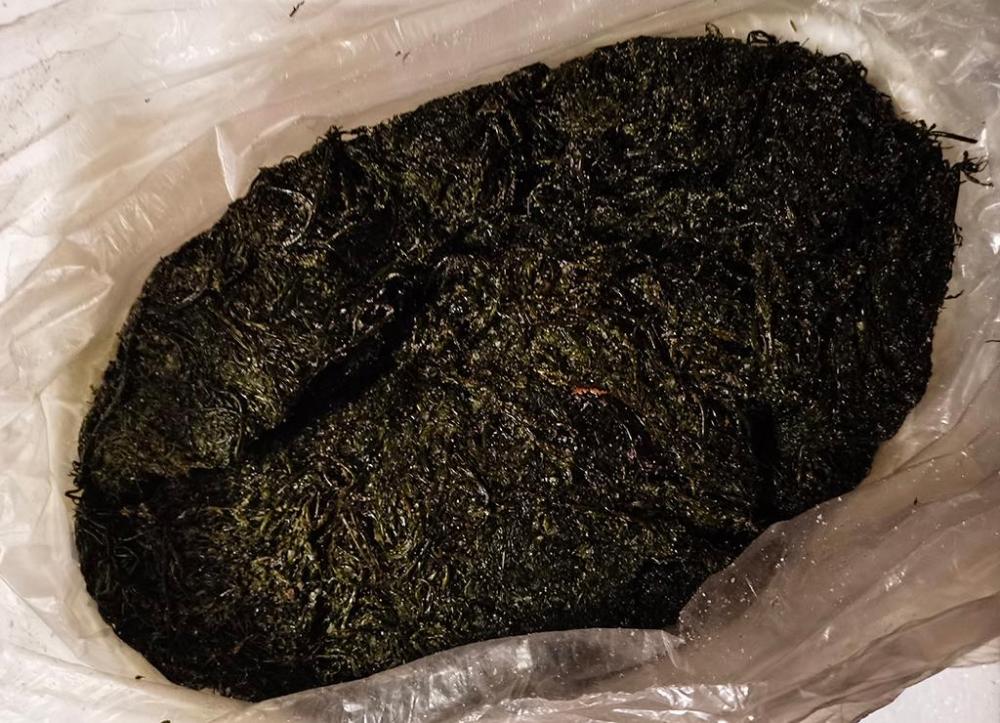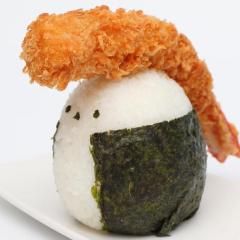I’m calling this topic ‘sea vegetables’ rather than ‘seaweed’ as not all the vegetative bounty of the seas or oceans is ‘seaweed’ which, applied strictly, only refers algae. There are other plants down there, including true vegetables with the seeds and flowers that algae lacks and also a largely unknown rich fungi population, as we shall see. ‘Sea vegetables’ also includes vegetation which doesn’t grow in the sea but alongside in salty coastlines and marshlands, therefore depending on the sea.
But, that proviso out of the way, it will be mostly seaweed.
Japan is known as a primary seaweed consuming nation, but it’s far from the only one. China is too. A large area of my local supermarket is dedicated to the crops from the subaquatic garden, both fresh and dried. In fact, some sources say that the Japanese learned to eat seaweed from the Chinese. Although things like sushi and ramen did come from China, I don’t totally buy the seaweed theory. Most of China is land-locked; Japan is an island nation surrounded by water. Anyway, Japan’s nori industry owes its life to a woman, Kathleen Mary Drew-Baker (1901-1957), from Manchester, England who never visited Japan but is celebrated every year in a Japanese festival known as the Drew Festival (BBC podcast).
Kathleen Mary Drew Baker
But for now I’m ignoring nori. Instead, I am looking first at sargassum.
One could be forgiven for assuming that this algae is named after the Sargasso Sea where it is prevalent, but in fact it is the other way round. The sea is named after the weed. Sargassum comes from the Portuguese.
In 1598, a Mr. W. Phillip wrote that “wee entred into the sea, called Sergasso, which is all couered with hearbes.‥ The hearbe is like Samper [samphire], but yellow of colour.‥ The Portingalles call it Sargasso, because it is like the herbes that groweth in their welles in Portingall, called Sargasso.”
It is also known as gulf weed and is scientifically known as Sargassum bacciferum, aka Sargassum natans or Fucus natans, but there are around 150 different genera.
In Japan, there is Sargassum muticum which has now spread to Europe and is found from British Columbia to California. In Europe it now extends along the coasts of Great Britain, France, Scandinavia, the Baltic Sea, the Netherlands, Ireland, the Iberian Peninsula and the Mediterranean from Italy and the Adriatic. It has also been recorded from China and Alaska.
Websites such as Trip Advisor and the like are full of people complaining that this disgusting, toxic weed which forms massive floating ‘islands’ reaching up to several square kilometres in size has invaded beaches and bays in the Caribbean and around Florida, ruining their ability to enjoy their leisure time and ability to play in their speed boats and whatever other expensive toys they play with.
I say “screw them!” Those floating islands are massively important to sea life everywhere, providing a home, temporarily or permanently, to many fish species. The tourists lining up to annoy those cute emerging sea turtle babies in the area and filming them to put on YouTube or Tik Tok are mostly unaware that those new born creatures are rushing to safety in the very algae that they complain about. The seaweed is used as a nursery! Not only by the turtles, but by fish such as mahi mahi, jacks, and amberjacks. Many eels travel thousands of miles to mate in the sargassum ‘islands’.
Also, as the seaweed ages and decays, it sinks to the bottom of the oceans, releasing nutrients and carbon, both essential to sea life and, by extension, all life. This is widely recognised by marine scientists and many of these floating ‘islands’ are actually protected by law, off parts of the USA coast.
“Because of its ecological importance, in 2003, Sargassum within U.S. Exclusive Economic Zone off the southern Atlantic states was designated as Essential Fish Habitat, which affords these areas special protection.” - https://oceanexplorer.noaa.gov/facts/sargassum.html
But enough of my ranting. The seaweed is also used in cosmetics, especially facial masks, but more importantly in food and not only for sea life! The Japanese call it ひじき- hijiki (their preferred species is usually S. fusiforme) and they seem to know a thing or two about edible seaweed. The brown or dark green algae with its gas-filled float bladders is very edible! In fact all seaweeds are edible, if not all palatable. All seaweed tends to be healthy and nutritious, but sargassum is particularly known for being high in protein, being even more so than egg whites are.
In Chinese it is 马尾藻 (mǎ wěi zǎo, literally ‘horse hair algae’) and is available preserved in salt to be used as a snack or garnish. It is also occasionally used in hotpots or soup. It should surprise no one that, in TCM, it also appears in a powdered form to be made into a drink to cure everything except gullibility.
Sargassum
I buy this in 2.5 kg (5½ lb) bags, but it doesn't last long. Not because it isn't well preserved; because I eat it!
2.5 kg of Sargassum


 Ka
Ka




